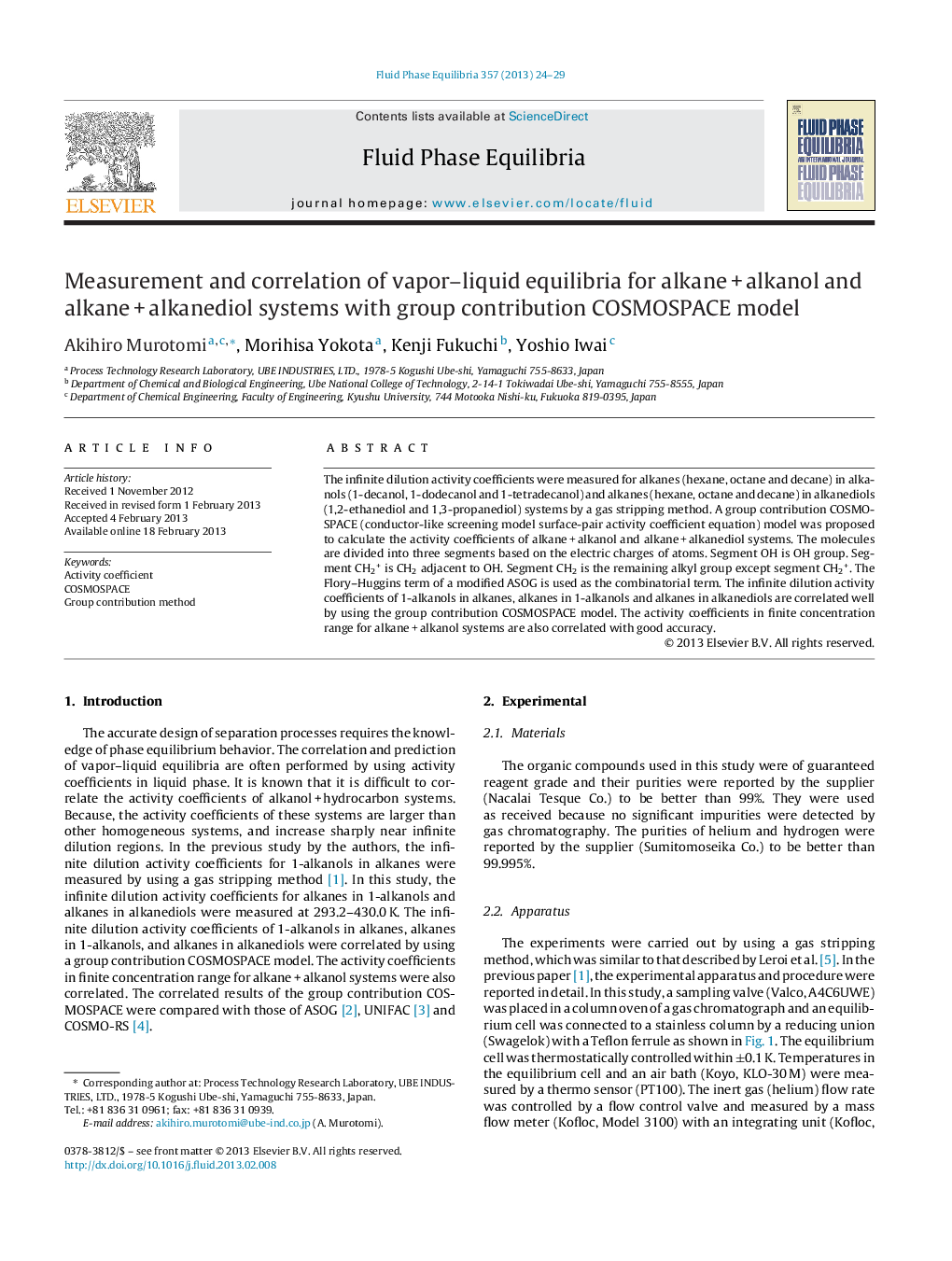| Article ID | Journal | Published Year | Pages | File Type |
|---|---|---|---|---|
| 203342 | Fluid Phase Equilibria | 2013 | 6 Pages |
The infinite dilution activity coefficients were measured for alkanes (hexane, octane and decane) in alkanols (1-decanol, 1-dodecanol and 1-tetradecanol) and alkanes (hexane, octane and decane) in alkanediols (1,2-ethanediol and 1,3-propanediol) systems by a gas stripping method. A group contribution COSMOSPACE (conductor-like screening model surface-pair activity coefficient equation) model was proposed to calculate the activity coefficients of alkane + alkanol and alkane + alkanediol systems. The molecules are divided into three segments based on the electric charges of atoms. Segment OH is OH group. Segment CH2+ is CH2 adjacent to OH. Segment CH2 is the remaining alkyl group except segment CH2+. The Flory–Huggins term of a modified ASOG is used as the combinatorial term. The infinite dilution activity coefficients of 1-alkanols in alkanes, alkanes in 1-alkanols and alkanes in alkanediols are correlated well by using the group contribution COSMOSPACE model. The activity coefficients in finite concentration range for alkane + alkanol systems are also correlated with good accuracy.
